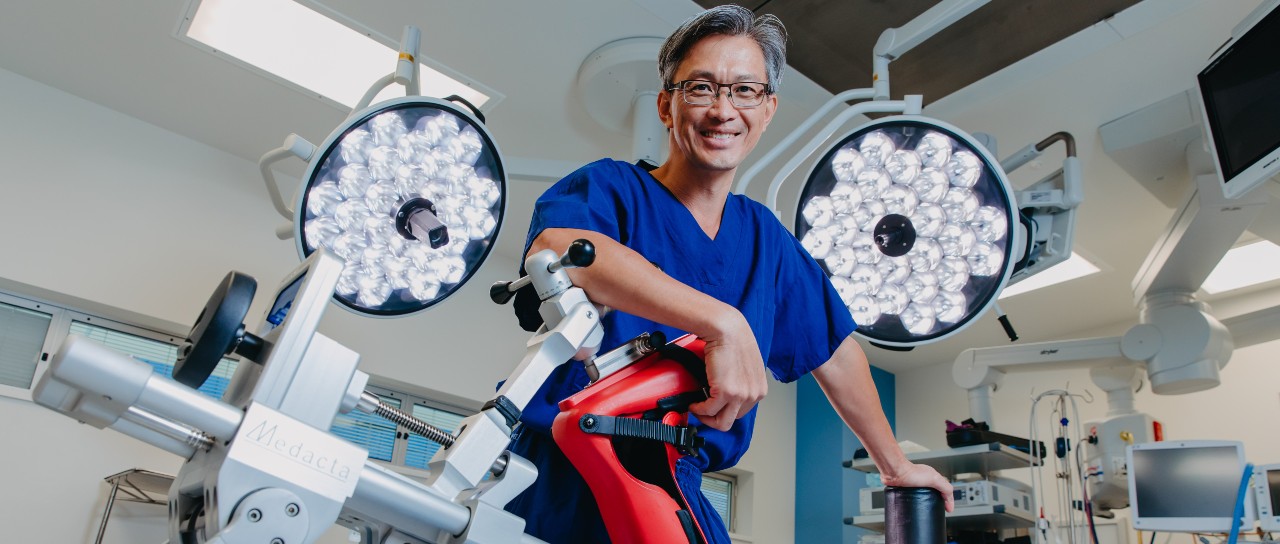The alternative approach to traditional hip replacements
Dr Stephen Sprague

Gold Coast Private orthopaedic surgeon Stephen Sprague says a contemporary approach to hip replacement surgery is improving short-term recovery outcomes and increasing long-term mobility for his patients.
Hip joint replacement surgery is traditionally done via a posterior approach through the back of the hip, but after training in the anterior method eight years ago Dr Sprague prefers the alternative.
"Having performed both approaches during my career, I have observed that in the short-term people find the anterior approach less painful, while long term outcomes are very similar," he said.
" A huge benefit of the anterior approach is the reduced risk of dislocation which means the patient doesn't have to worry about it in their day-to-day activities and can resume a much more normal lifestyle.
"If you have a hip replacement using the standard posterior approach there is a 1 per cent risk of dislocation so patients are not supposed to bend their keens beyond 90 degrees as things like squatting or sitting on low chairs can potentially dislocate their hip.
"With the anterior approach, you don't violate the posterior capsule which helps keep the hip more stable, and it also results in less muscle trauma which makes recovery easier and less painful."
Dr Sprague said there was also a reasonable number of people who had some degree of trochanteric pain after posterior hip replacement.
"Some people find it difficult to lay on their side with a scar on their bony prominence," he said.
"When the joint is replaced from behind, the incision for the standard posterior approach is on the side which can be uncomfortable for some people, whereas the anterior incision is at the front which seems to be better tolerated."
Dr Sprague said the reason the anterior approach was not as commonplace was because most surgeons were trained the traditional way.
"About nine years ago a nurse asked me to use the anterior approach on her hip replacement," he said.
"I initially labelled it a trend that wouldn't add benefit to the procedure, but the more I looked into it, and after a year of research, I decided I would pursue it.
"I have now been using it for eight years and in 2015 I surveyed 30 patients who had posterior on one side and anterior on the other and 100 per cent preferred the anterior approach."
Dr Sprague said patients could expect to stay an average of three days in hospital and should be able to return to normal activities between six to eight weeks post-surgery.
For more information contact:
Sprague Medical
14 Carrara Street, Benowa
P: 07 5597 0303
W: sprague-medical.business.site
